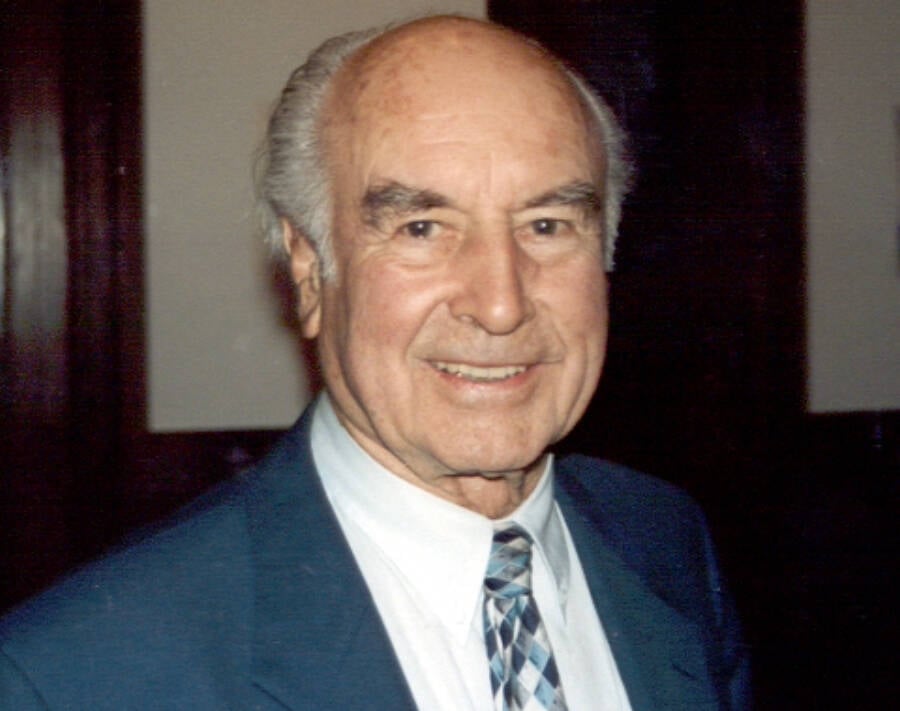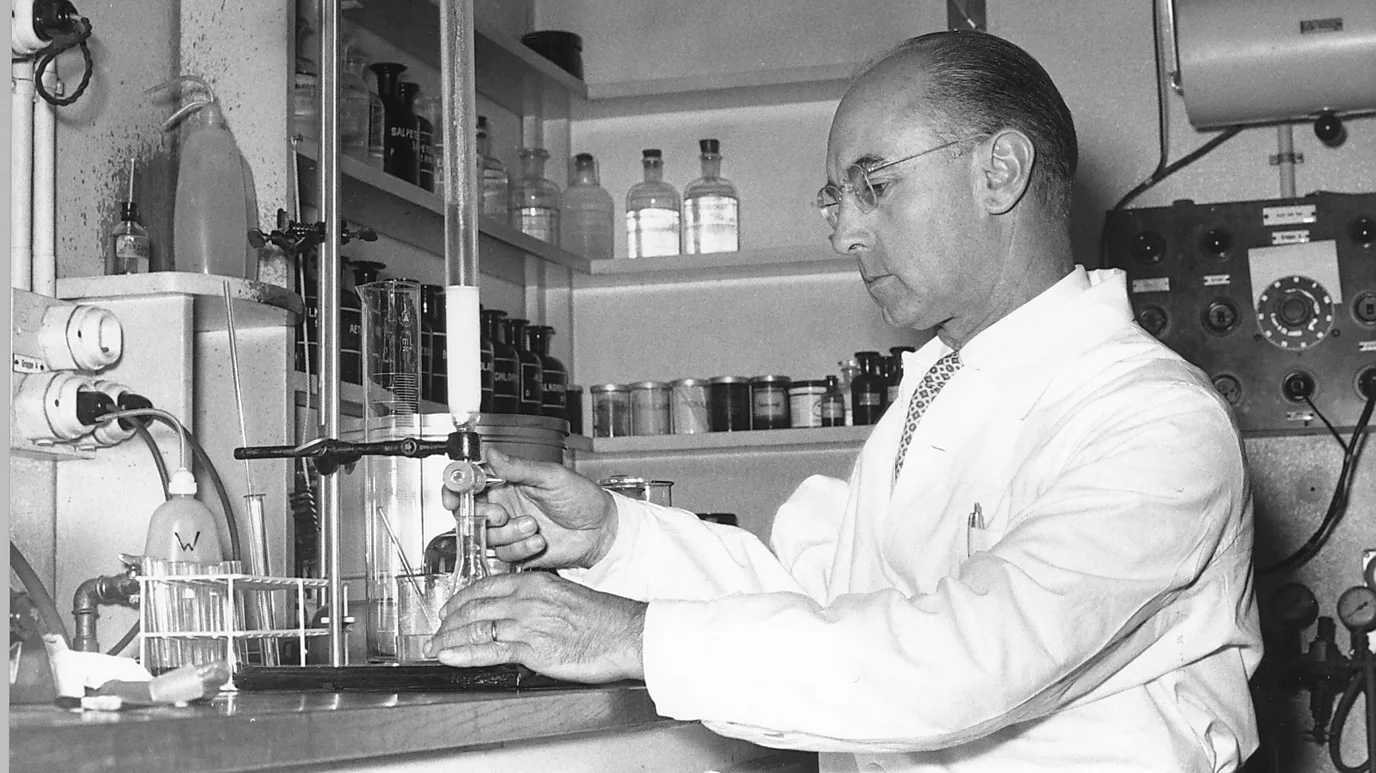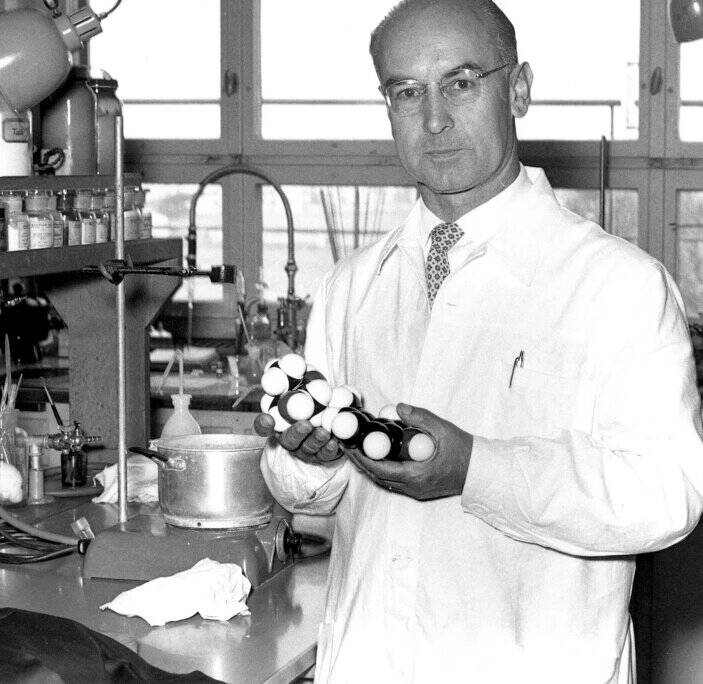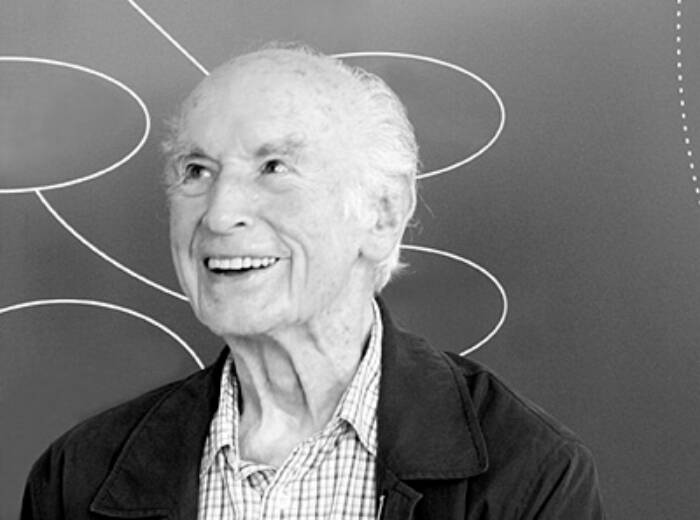Albert Hofmann accidentally invented LSD in 1938 — and years later, he became the first person to intentionally trip on acid when he took 250 micrograms of LSD and biked home while experiencing the drug's full psychedelic effects.

Wikimedia Commons / CC BY-SA 2.5Albert Hofmann, a Swiss chemist who was the first to synthesize LSD.
In 1938, Swiss chemist Albert Hofmann was synthesizing the active compounds in ergot, a toxic fungus that commonly grows on grains, in an attempt to create a circulatory and respiratory stimulant. Instead, he accidentally discovered lysergic acid diethylamide (LSD).
However, he didn’t come to realize the drug’s significance until five years later.
In 1943, Hofmann accidentally ingested the substance, becoming the first human to trip on LSD. Soon after, on April 19, 1943, he intentionally took 250 micrograms of the drug and biked home from his laboratory. This event marked the beginning of LSD’s role in psychedelic research and paved the way for its use as a recreational drug.
Hofmann’s discovery had a profound influence on the study of consciousness and psychedelic substances. Today, the world recognizes his work every year on April 19, now known as “Bicycle Day.”
This is the story of Albert Hofmann and the trippiest bike ride in history.
The Early Life And Career Of Albert Hofmann
Albert Hofmann was born on Jan. 11, 1906 in Baden, Switzerland to parents Adolf and Elisabeth Hofmann. Though he was raised Protestant, Hofmann was fascinated by the mystical as a child and felt a deep connection to nature. This developed into a strong drive to understand the world and the materials it is made of.
In 1926, Hofmann enrolled in the University of Zurich’s chemistry program with a focus on chemical processes in plants and animals. He graduated in 1929, earning his PhD at the age of just 23.

NovartisNot only was Albert Hofmann the first to synthesize LSD, but he later became the first to intentionally trip on acid.
Reflecting on his career choices at the 1996 Worlds of Consciousness Conference in Heidelberg, Germany, Hofmann stated:
“This [career] decision was not easy for me. I had already taken a Latin matricular exam, and therefore a career in the humanities stood out most prominently in the foreground. Moreover, an artistic career was tempting. In the end, however, it was a problem of theoretical knowledge which induced me to study chemistry, which was a great surprise to all who knew me.”
Upon graduating, Hofmann accepted a job at Sandoz Laboratories, a pharmaceutical-chemical research laboratory in Basel, Switzerland.
“What attracted me to this job was the research program undertaken by the laboratory director, Professor Arthur Stoll, on the advice of the famous Nobel Prize winner Professor Richard Willstutter,” Hofmann explained at the Worlds of Consciousness Conference. “Namely, the isolation and purification of the active principles of well-known medicinal plants, and their chemical modification.”
In this new role, Hofmann made the fateful decision to study the ergot fungus and its derivatives — unknowingly drawing the world closer to the discovery of LSD.
Hofmann Discovers The Psychedelic Effects Of LSD
On Nov. 16, 1938, Albert Hofmann successfully synthesized LSD from lysergic acid derivatives, the building blocks that make up ergot.
At the time, Hofmann had wanted to develop a circulatory and respiratory stimulant. He fused together lysergic acid with other compounds, and on the 25th attempt, he created lysergic acid diethylamide (LSD-25).

Novartis Company ArchivesAlbert Hofmann holds a model of the LSD molecule.
However, LSD-25 was deemed useless in animal testing. Researchers noted that the drug evoked restlessness in the animals but otherwise seemed unremarkable. For five years, LSD-25 was set aside.
Then, in 1943, Hofmann took a second look at the compound and accidentally ingested some himself — leading him to discover its hallucinogenic properties.
“[I was] affected by a remarkable restlessness, combined with a slight dizziness,” he wrote in his 1979 autobiography LSD, My Problem Child. “At home I lay down and sank into a not unpleasant intoxicated like condition, characterized by an extremely stimulated imagination. In a dreamlike state, with eyes closed (I found the daylight to be unpleasantly glaring), I perceived an uninterrupted stream of fantastic pictures, extraordinary shapes with intense, kaleidoscopic play of colors. After some two hours this condition faded away.”
Three days later, Hofmann decided to take another dose of acid. This time, the results were not so pleasant.
In a day known as Bicycle Day, Hofmann peddled home from his laboratory while experiencing the full effects of LSD.
Bicycle Day, The Trippiest Bike Ride In History

Wikimedia CommonsA blotting paper illustrating Hofmann’s experience riding his bike on LSD.
On April 19, 1943, Albert Hofmann intentionally took 250 micrograms of LSD to further explore its effects. He described his second trip in horrifying terms.
At different points during his trip, Hofmann struggled to speak intelligibly, developed anxiety and paranoia, feared that he was going insane or that he was dying, and reported seeing horrifying creatures moving around him and feeling as if dark entities were possessing him.
He was so incapacitated that he asked his assistant to escort him home, and the two departed the laboratory on bicycles. Of this terrifying journey, Hofmann wrote:
“Everything in my field of vision wavered and was distorted as if seen in a curved mirror. I also had the sensation of being unable to move from the spot. Nevertheless, my assistant later told me that we had traveled very rapidly.”
After Hofmann arrived home, a doctor assessed him and determined he was not in any danger. After that, Hofmann’s trip took a drastic turn. The worst of the drug’s effects gradually subsided, and he was able to enjoy the experience.
“Kaleidoscopic, fantastic images surged in on me, alternating, variegated, opening and then closing themselves in circles and spirals, exploding in colored fountains, rearranging and hybridizing themselves in constant flux,” Hofmann wrote. “It was particularly remarkable how every acoustic perception, such as the sound of a door handle or a passing automobile, became transformed into optical perceptions. Every sound generated a vividly changing image, with its own consistent form and color.”
The Legacy Of Albert Hofmann And His Invention

Wikimedia Commons / CC BY-SA 2.0 deAlbert Hofmann in 2006.
In the years after Albert Hofmann invented LSD, the drug was used in a variety of controversial experiments on U.S. military personal and psychiatric patients.
Eventually, LSD became a key facet of the 1960s countercultural movement as casual users sought to experience its psychedelic effects recreationally. By 1968, the United States had outlawed the drug because of its perceived dangers.
For his part, Hofmann reportedly took LSD hundreds of times and felt it could be used to help humans understand our place in the natural and spiritual world. However, Hofmann also believed LSD could be dangerous and discouraged the use of the drug recreationally, asserting that it should be a controlled substance.
Albert Hofmann died in 2008 at the age of 102. But his legacy lives on through his invention.
Memorialized on April 19, Bicycle Day isn’t necessarily a celebration (with the exception of some enthusiasts who choose to make it one), but rather a way to recognize a man, his amazing drug discovery, and the serendipitous way it happened.
After reading about Albert Hofmann and Bicycle Day, dive into the story of MK-Ultra, the government mind control experiment that involved using LSD on unwitting victims. Then, read about Timothy Leary, the Harvard professor turned “high priest of LSD.”





